A property with a glorious history ...
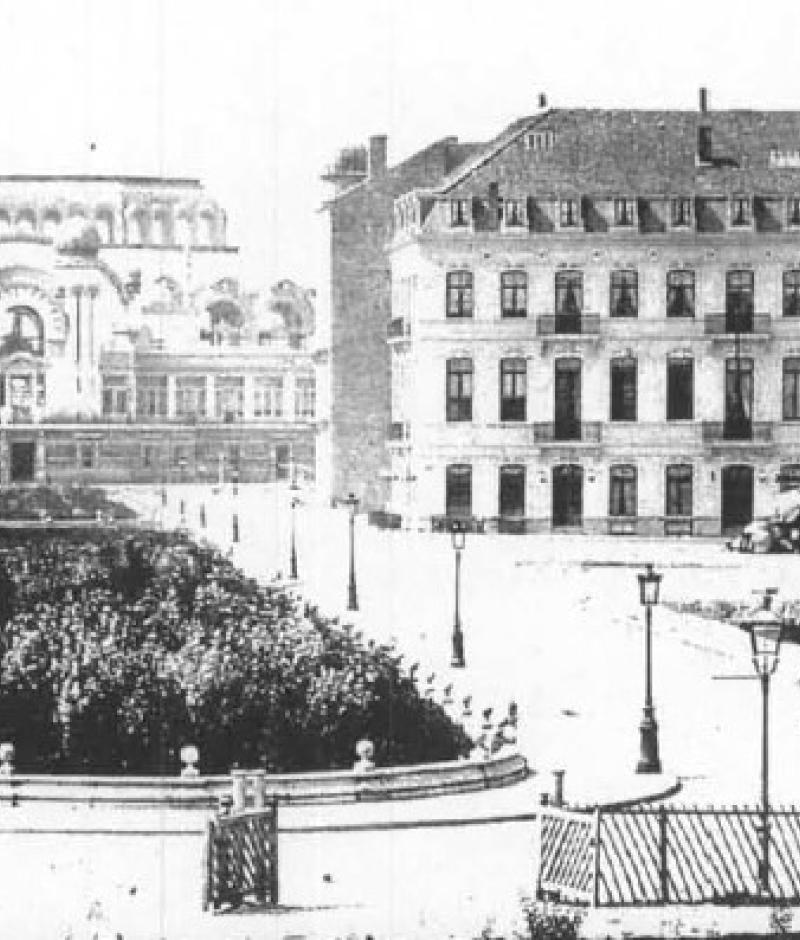
... 1879
Mr Hubert DETIF, from Verviers, bought a plot of land on the corner of Avenue Léopold and "Place de Théâtre" on which, a year later, a beautiful and stately Hotel-Restaurant called "Hótel de Suède" was built. The building occupied the entire current area and had 3 floors.
The current entrances to the hotel and at the time the restaurant never changed location. Hotel manager Hubert DETIF enjoyed his fine achievement for only 5 years. After a brief illness, Hubert Joseph Julien DETIF died in Ostend on 3 March 1885. His widow Adelie DE RYCKERE continued to run the hotel.
Photo 1885
… 1902
Mrs Adelie DE RYCKERE and her son Julien DETIF sold the "Hótel de Suède" to banker Maurice ELLEBOUDT. The building was swiftly and thoroughly renovated with the intention of serving a dual purpose. To this end, he raised the building by one floor. The building now had 4 floors.
The "Bank Maurice Elleboudt" put its offices and counters in the part overlooking the "Place de Théâtre". The entire first floor now had a large continuous balcony. Large signs read "Banque Maurice Elleboudt".
The hotel kept its entrance on the "Place de Théâtre". It had 14 guest rooms and was equipped with an electric lift. The latter represented significant progress. After all, in those years the big hotels on the seafront still had to make do with hydraulic lifts.
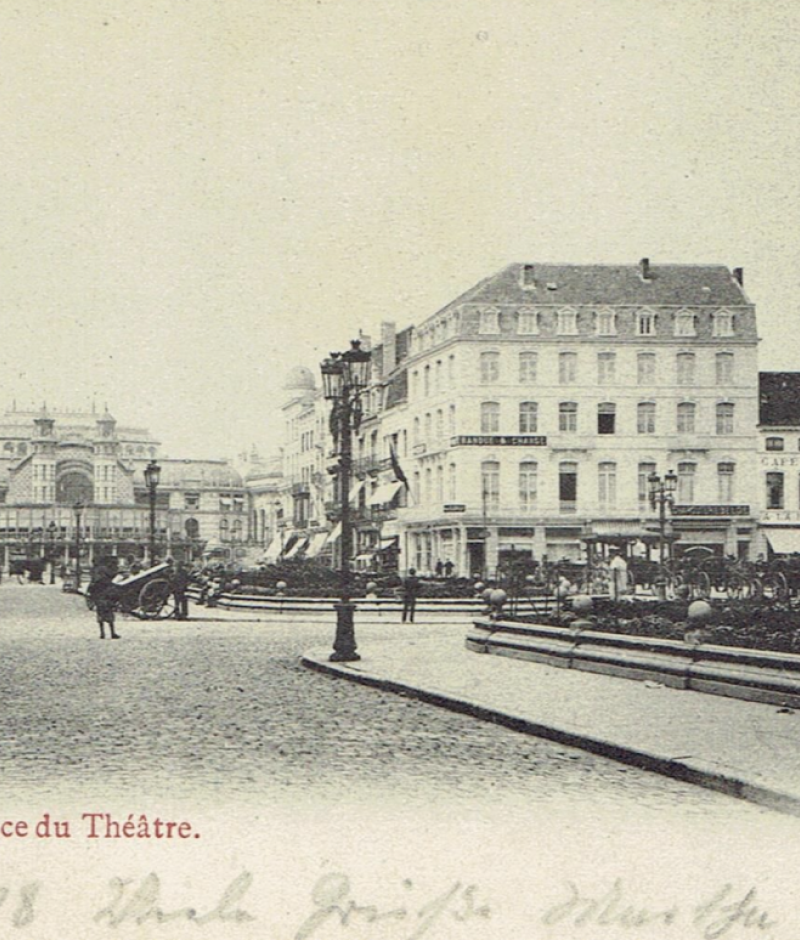
… 1906
When the works were completed the hotel was put up for rent, without succes. Banker Maurice ELLEBOUDT then secured the management of the hotel himself and changed the name to "Hôtel du Parc".
In the same year, on 4 August, Princess Marie-José, daughter of Prince Albert and Princess Elisabeth, was born in Ostend. This happy event gave rise to the name change from "Place du Théâtre" to "Square Marie-José".
Photo 1909
… 1919
After the war, a new kind of tourism emerged in Ostend : "Battlefield Tourism". Not only British and Canadians visited our city, but also Australians showed up in large numbers. Ostend's central location with its extensive communications network and numerous hotels played a key role. As a result, the majority of these new tourists chose Ostend as an overnight base.
In the evening, this crowd overwhelmed Ostend's numerous "Sing Song Cafés", where people sang loudly, drank heavily and lived intensely.
This favourable economic situation encouraged the FABRY sisters to rent not only the hotel, but also the premises of the "Bank Maurice ELLEBOUDT". When they opened the hotel in 1919, they kept the name "Hôtel du Parc".
The hotel, restaurant and café were extremely busy during the summer holidays. However, during the off-season hotel occupancy reduced drastically. This in contrast with the restaurant and café, which were frequently visited by the locals during the winter season. The restaurant especially became a must for banquets and wedding parties, held by the Ostend bourgeoisie.
…1928
Due to the end of their lease and career the FABRY sisters quit at the end of 1928. The owner, Maurice ELLEBOUDT, was no longer interested in the property and sold it to Victor LIBERT, who would run the hotel himself.
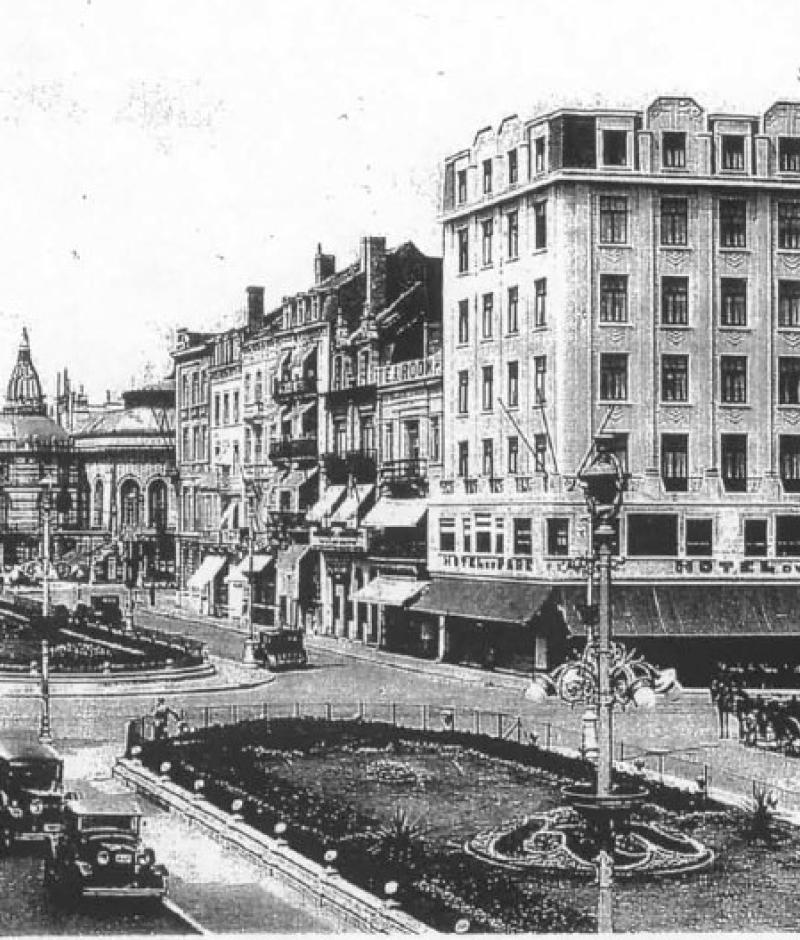
… 1931
Architect Joseph VAN DER BANCK was engaged for a thorough renovation. The extensive renovations were completed in a very short period of barely 10 months. "Hôtel du Parc" was raised by two floors, so that the building would henceforth have 6 floors. The façade was updated and the first floor was widened by the continuous balcony that was incorporated. Competent management made the "Hôtel du Parc" one of the most flourishing hotel-restaurant-café establishments in Ostend. Over the years, the café became the place to be of businessmen and also of anyone who just wanted to stroll on the terrace.
Photo 1938
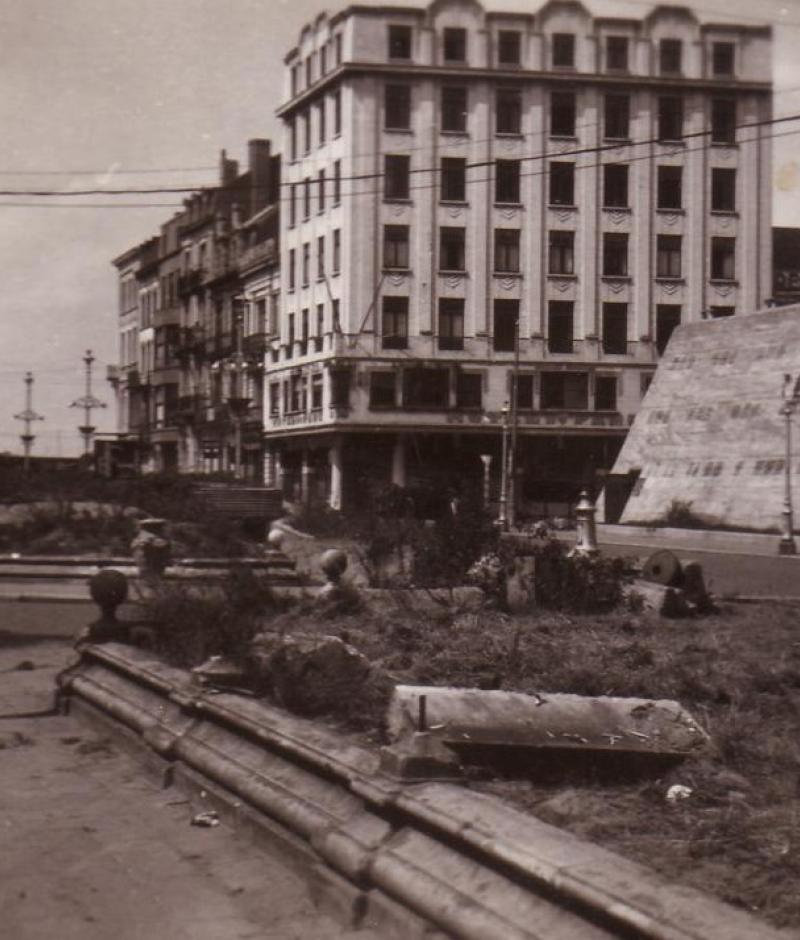
…1940
Occupied Ostend was declared an "enclosed area" in June 1940. The comfortable and well-located "Hótel Du Parc" was claimed by the military authorities. The "Kommandantur" settled there. Immediately Victor LIBERT no longer had a say in his own establishment. For four years the actual administration of Ostend would be based here. "Fat Jef", non-commissioned officer of the Gestapo was the most feared man in Ostend at the time.
…1945
After the capitulation of Nazi Germany, on 8 May 1945, the reconstruction of heavily ravaged Ostend could begin. In these post-war years, under the management of Victor LIBERT, "Hôtel du Parc", exceptionally saved from war devastation, experienced an unprecedented boom.
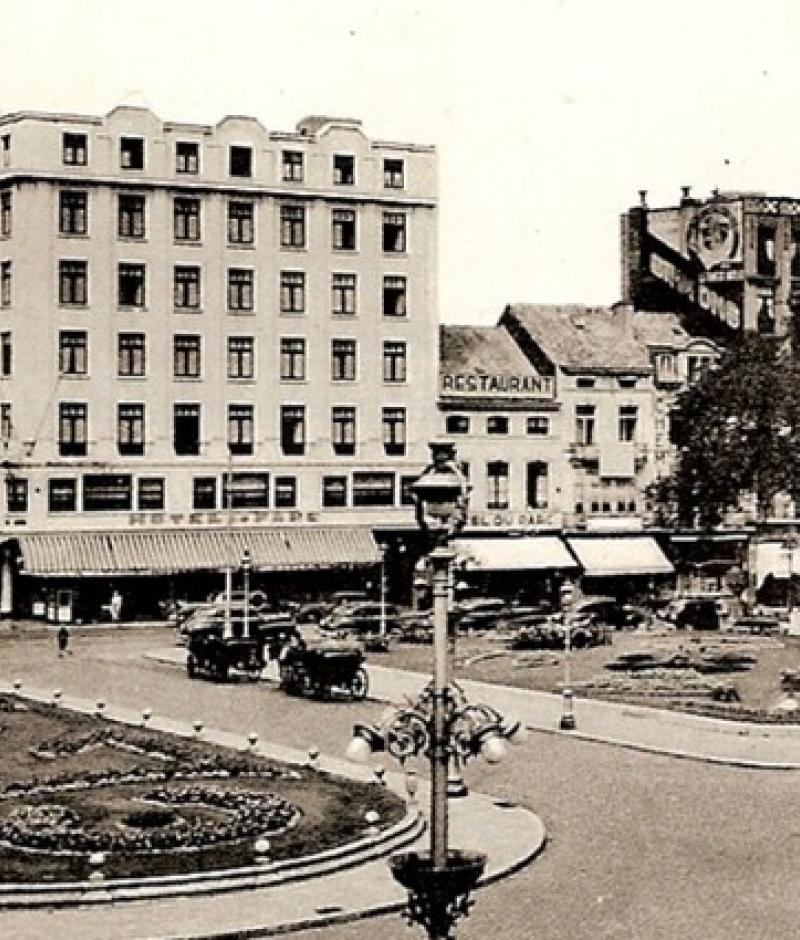
…1950
On 8 June, Victor LIBERT died at the age of 66. His widow LIBERT and son would continue to run the hotel until the end of 1951. In mid 1951, the LIBERT and BLONTROCK families came to an agreement to take over the "Hotel du Parc". Albert BLONTROCK founded the "Hotel du Parc Ltd" and started with a completely new team on 1 January 1953.
Photo 1952
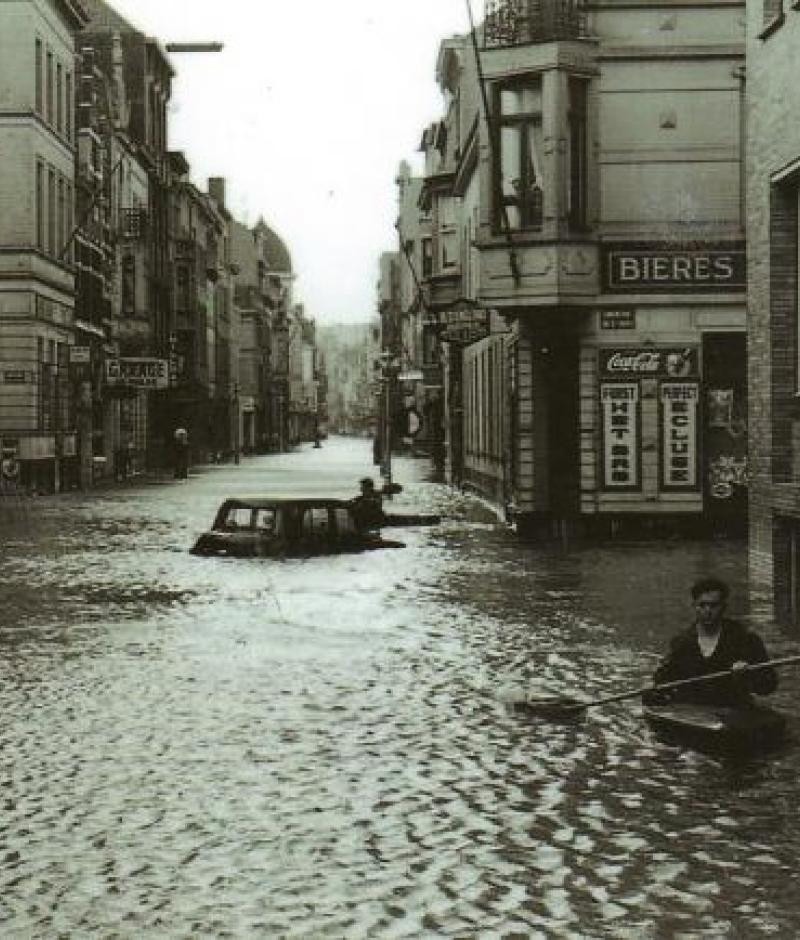
…1953
Four weeks later, on the night of Saturday to Sunday 1 February 1953, disaster struck. A heavy northeastern storm caused flooding in Ostend's city centre. A continuous flood of sea water stained by oil penetrated the town, for four hours. A hellish spectacle for those who witnessed it.
In the "Hôtel du Parc" the cellars were flooded. The central heating, the lift, the fridges, all electrical appliances aswell as the general lighting shut down due to a power outage. The running water, tainted by the flood, was shut off by the city authorities.
February is the month for gala balls in Ostend. That Saturday night, there were four. By midnight, the authorities notified all the venues that the city centre was flooding. Most got out immediately. Too late, however; all the streets were already flooded and a lot of parked cars immediately became inaccessible. A lot of shivery and lightly dressed ball guests ended up at the "Hótel du Parc" after an anxious and chilly search. Although closed and with its own cellars under water, the BLONTROCK family reopened the doors of the "Café du Parc". In addition to comfort and hot drinks, they provided the necessary assistance to these "castaways".
Own suffering and damages were cleared up quickly and with renewed hope the new team in "Hótel du Parc" started the 1953 season. New people, new methods and a professional welcome generated the growing success of their enterprise.
Photo 1 Feb 1953 - Langestraat
…1976
After an active life, Albert BLONTROCK died in Ostend on 29 June 1976. The "Hôtel du Parc" lost a commendable director. A year later, his widow also died and Rafaël BLONTROCK took over the business together with his wife, Simonne DEBRUYN. Under their management, the "Hôtel du Parc" continued to be a successful business.
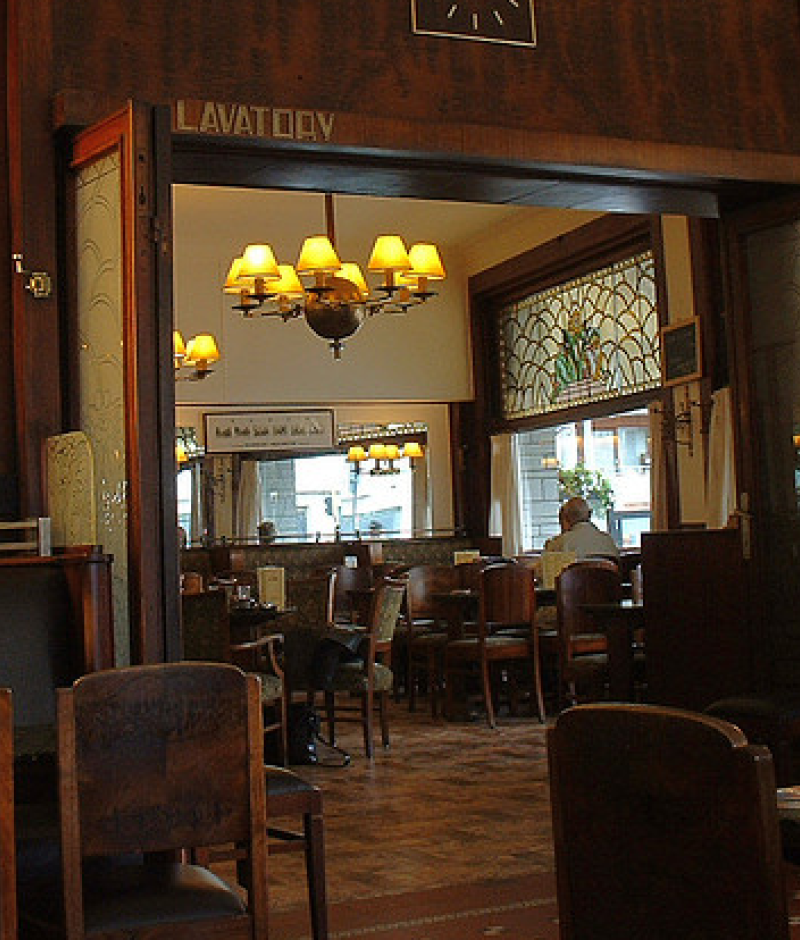
…. 1983
Hôtel du Parc" returned to the VINCKE-LIBERT family. The business was split into a hotel operation and a café, both operated by the VINCKE children. The hotel and brasserie underwent another major renovation to meet the requirements of modern comfort and fire safety. The class and thoroughness of the restoration works resulted in the insight of many admirers and government institutions. The Art Deco style is acclaimed inside and outside Ostend. The facade and interior of the hotel were renovated in a sleek art deco style, stained-glass windows, lighting, furniture, tiled floors, mirrors, ceiling reliefs, everything breathed art deco.
Photo 1983
… 2000
The "Hotel and Brasserie du Parc" are listed as cultural monuments by Ministerial Decree dated 27/01/2000 because of its historical, artistic and socio-cultural value.
…2016
Mr Glenn HOORELBEKE takes over Brasserie du Parc.
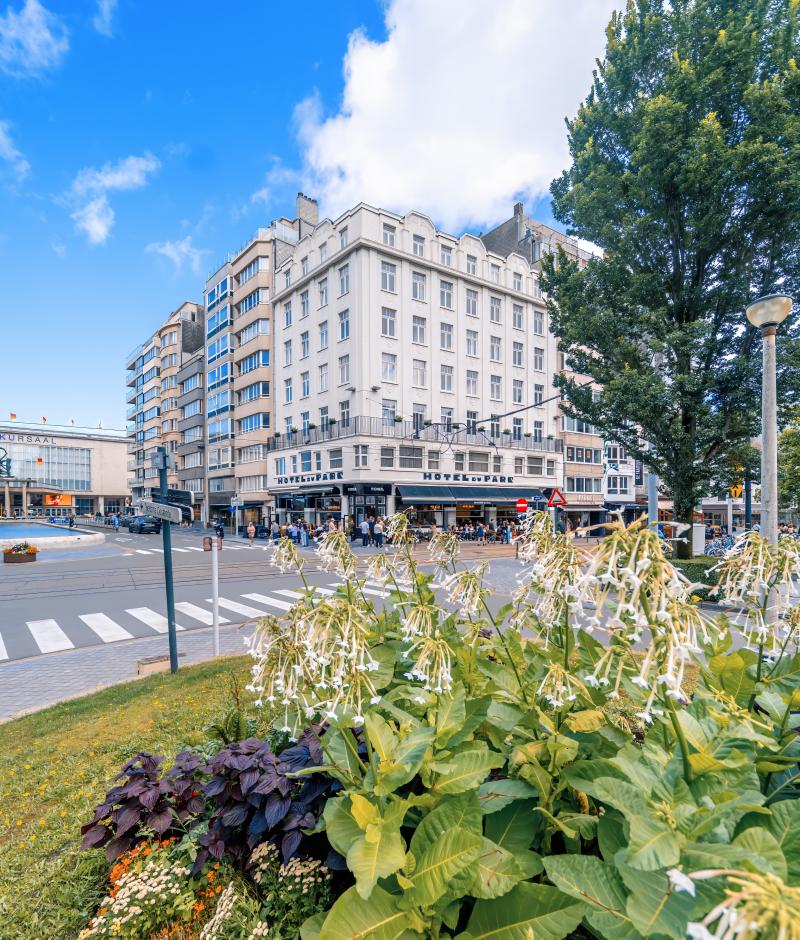
… 2021
LINDEN family becomes the new owner of the brasserie and hotel.
The entire property will undergo another major renovation. In the hotel part, all rooms will be completely renewed, as well as a thorough restoration of the numerous art deco objects that both the hotel and the brasserie possess.
On 14 July 2023, the first guests are welcomed to the renovated "Hotel du Parc". From now on, guests will be able to bathe in the comfort and luxury of a **** Hotel. The name of the brasserie changes to "Café du Parc".